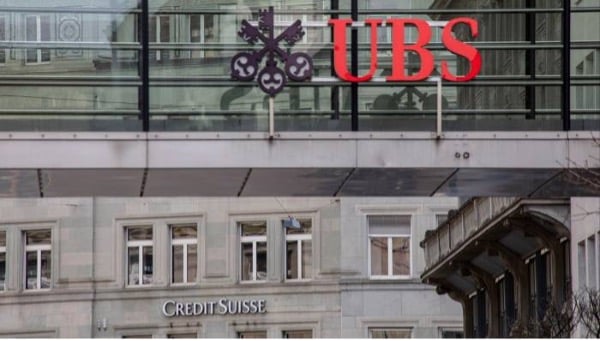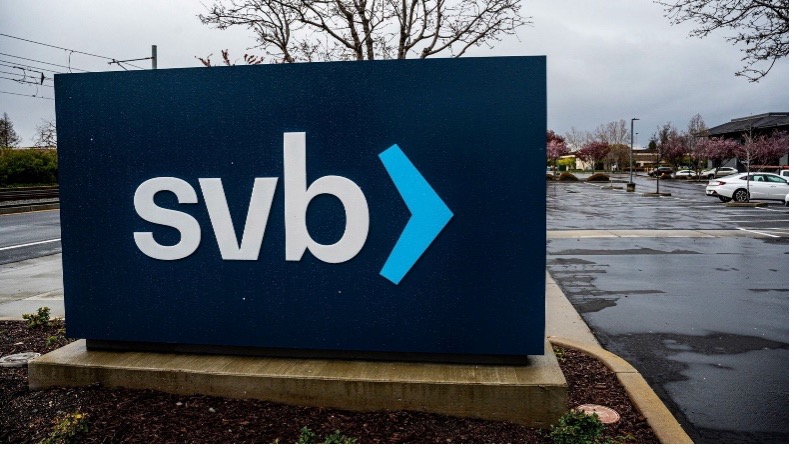UBS’s wedding to Credit Suisse — with Thomas Jordan holding the shotgun — puts the nail in the coffin of investing certainty.
As a long-term investor, I’m looking at the forced marriage between UBS and Credit Suisse with a keen sense of worry.
The Swiss state and the global banking system are doing their best to present the deal as mission critical. Swiss Finance Minister Karin Keller-Sutter has claimed that ‘this is no bailout,’ but rather a ‘commercial solution’ necessary because ‘the bankruptcy of Credit Suisse would have had a huge collateral damage – on the Swiss financial market also internationally.’
Ironically, UBS has been presenting the buyout as an acquisition, while the junior is claiming the deal as nothing more than a run-of-the-mill merger, implying a marriage where both parties get a fair compromise.
However, the leader of Switzerland’s second-largest party, Roger Nordmann, has already argued that ‘the new UBS is also another massive risk – it’s going to have more than 1,500 billion francs in assets, and it’s simply too big for Switzerland.’
But beyond Switzerland, there seems to be an emerging pattern of states and regulators doing whatever they want — causing more damage to confidence than they realise.
UBS Credit Suisse deal examined
Let’s look at the specifics of the deal.

UBS has $1.1 trillion in assets, while Credit Suisse has $575 billion. Despite being double the previous offer, UBS and Credit Suisse have agreed a price tag of $3.25 billion — less than a fraction of its Friday closing value.
This an all-share transaction, whereby CS shareholders will receive one UBS share for every 22.48 CS shares held, equivalent to 0.76 Swiss francs per share — well below Friday’s closing price of 1.86 Swiss francs.
The Swiss National Bank has agreed to offer a $107 billion liquidity line to UBS — after the previous $54 billion line offered to CS failed to stem losses — and the Swiss President Alain Berset is presenting the deal as the ‘best solution’ possible for all parties concerned.
The government is also backing UBS with an £8 billion insurance scheme — details of which are thin on the ground — to protect the company from suffering any losses as a result of the ‘merger.’ Keller-Sutter advises that this facility will act ‘like a backstop and insurance that only comes into effect if certain losses occur.’ In essence, it frees UBS to gain all of the potential benefits, with few of the possible risks.
AT1 bondholders holding circa $17 billion of high-risk bonds will be wiped out completely, and the Swiss government is planning to change laws to bypass any UBS shareholder vote on the deal. Justifying the move, FINMA argued that the new larger entity would ‘result in a larger bank, for which the current regulations require higher capital buffers.’
Swiss National Bank president Thomas Jordan argues that ‘it was indispensable that we acted quickly and find a solution as quickly as possible’ given CS’s position as a systemically important bank.
UBS intends to downsize Credit Suisse’s investment banking business to align it with its ‘conservative risk culture,’ which will likely lead to thousands of job losses. And the Competition Commission will have no say in the merger of the country’s two biggest banks.
AT1s were introduced as part of post-2008 regulatory reform. They are a type of contingent convertible security, which offer higher returns than traditional bonds but can see investors lose their capital if the bank’s capital ratio falls below a threshold of safety.
It’s the riskiest form of bank debt in Europe, so investors wouldn’t usually be angry at the losses. However, the very low buy-out price combined with breaking the standard capital structure which should have seen these bondholders at least partially compensated could create chaos in the wider European debt markets soon.
Out of the frying pan and…?
Long-term investors like me look for trends to build wealth over the longer term. Specifically, I want certainty — and a part of this is certainty that the international banking system has processes in place to ensure that when things go wrong, there is an orderly solution.
Often, these solutions leave investors with losses — which is fine, but the key thing is that you know what you’re getting into. If you buy a stock, equity, cryptocurrency, or commodity, the idea is that all cards are on the table.
And over the past couple of years, it’s started to feel like the powers that be are choosing to make it up as they go along.
Back in the heady days of GameStop and AMC — remember the prehistoric says of 2021? — trading platforms turned off the buy button. The fact that the platforms in question may not have had sufficient liquidity, or that the short squeezes might have done immense damage to the financial system are really neither here nor there.
The problem is that traders entered a high-risk position in good faith that they may lose their capital, and then suffered tremendous losses not because of a poor strategy but because the system itself changed.

Now consider the collapse of Silicon Valley Bank. The real takeaway is that when push came to shove, US regulators chose to insure depositors for the total amount in their accounts, rather than the previously advised FDIC limit of $250,000. This means — despite what Janet Yellen may protest — that it is essentially impossible not to guarantee the deposits at any other banks which fail in the future.
In the UK — far less pernicious but still relevant — the government has increased the annual allowance for pensions to £60,000 and eradicated the former lifetime allowance limit of circa £1 million entirely. With a new government likely to reverse these changes, it’s making it harder to plan a variety of EIS/ISA/SIPP contributions effectively, undermining confidence in the system.
And then there’s the UBS-CS deal, where regulators have ridden roughshod over investors, bondholders, competition, and the law. And the deal put in place cannot have been conducted with the kind of thorough due diligence that UBS owes its own shareholders.
Now Credit Suisse shareholders can’t whine about making losses. The bank had a market cap of $70 billion in 2006, which had halved to $30 billion by 2016, and then to $10 billion by 2022. That’s capitalism for you.
But the bank passed all mandated stress tests less than a year ago. Yet the price tag of $3.35 billion -implies that the vast majority of CS’s assets are toxic. Were regulators asleep at the wheel?
Is it fair for GameStop investors, US bank shareholders, UK pension savers, and even Credit Suisse bondholders to get clobbered by a system of regulation that changes the second that any stress occurs?
In March 2008, Bear Stearns suffered a similar fate to Credit Suisse, falling from $100 per share to just $2 per share within days.
And despite protestations that post-2008 regulatory requirements are strictly enforced; dubious investors are now casting their eyes at the next banking target.
This article has been prepared for information purposes only by Charles Archer. It does not constitute advice, and no party accepts any liability for either accuracy or for investing decisions made using the information provided.
Further, it is not intended for distribution to, or use by, any person in any country or jurisdiction where such distribution or use would be contrary to local law or regulation.
